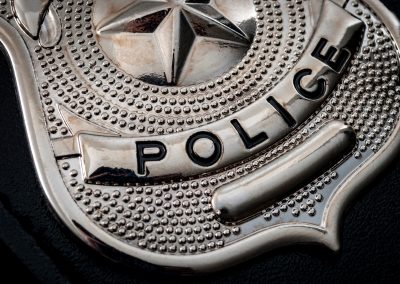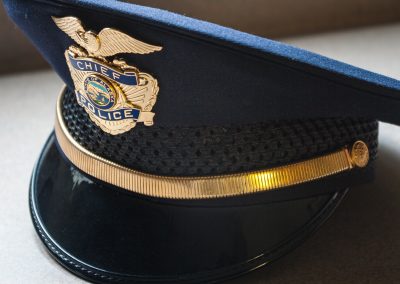How many times have you talked to your colleagues—in the locker room, at the gym or on a coffee break—about the misconceptions the public has when it comes to police work? Most of the time it probably includes some choice words to describe the often unrealistic expectations the public has regarding our performance and their tendency to judge the acts of officers prematurely when the public has no understanding of the actual facts. This produces frustration, anger and even anxiety for most of us—at least it did for me.
I’ve always believed that you need to be your own advocate. I learned this early on in my police career and it has served me well in every facet of my job. What I mean by this is simple: Don’t expect other people to speak up for you in time of crisis or need.
I don’t want this to be confused with “the squeaky wheel gets the oil” or some other phrase associated with chronic complainers, who continually talk about how bad their situation is but do nothing to improve it. I’m referring to the capacity of an individual to recognize deficiencies and problems, and then bring them to light in a fact-based, rational way, while concurrently offering solutions to fix it. People who chronically complain are often viewed as “problems.” People who identify problems and offer solutions are “problem solvers.”
Like many of you, I have become exasperated by the media’s recent negative portrayal of police officers and our use of force as a profession. Media reports are often riddled with inaccurate and misleading information. However, there are very few conversations being held, outside the law enforcement community, that address human factors in rapidly unfolding, high-stress force encounters. Seldom are the unrealistic expectations the public holds discussed: the various sensory inputs, the speed, the physiology of incidents, and so forth. The question is: Are we, as a profession, doing enough to inform and educate the public on the realities of human dynamics in force situations and how those dynamics influence police officer’s decisions?
The answer, for me, was: “NO!”
Solve the Problem
So, how do we fix it? Here’s what a colleague and I did: We became advocates. My former Training Coordinator, Lt. Eric Scheffler (now retired) and I attended a Force Science Institute “Use of Force Analysis Certification” course. It was a week-long intensive seminar that studies the human factors in police use of force and provides students with the scientific data to support their research. I can tell you without hesitation, it was one of the best training courses I have ever attended in my twenty-three years in law enforcement. The data confirmed many of the beliefs/theories I’d developed over my career through training, including the reactionary gap, tunnel vision and auditory exclusion, to name a few.
After our first day of training with Force Science, my colleague and I were already developing a strategy to provide this information to the general public and, more specifically, to our own community. From our perspective, the information was too vital to not share with the public. It was an especially timely conversation to have in our community given the recent societal uptick of negative feelings toward police and the fact that officers in my agency had been involved in four shooting incidents over the last 2 ½ years, three of which resulted in the deaths of suspects.
At the conclusion of our week-long training, we had a discussion with Dr. Bill Lewinski and Scott Buhrmaster of Force Science on the feasibility of bringing a condensed version of the class to Atlantic City. However, we asked that the class be geared toward a mixed audience of both law enforcement and civilian, community stakeholders. Dr. Lewinski and Scott Buhrmaster were interested in our proposal and recognized the value in such a concept that serves as an educational tool and a community outreach initiative.
My associate and I immediately assembled a report highlighting the benefits of our training and illustrated how this information could serve as a community education tool. It was supported by Atlantic City Police Chief Henry White and then proposed to our County Prosecutor, Jim McClain, and Chief of County Detectives Darren Dooley. Without hesitation, it was unanimously agreed that this opportunity couldn’t be wasted. Prosecutor McClain even pledged funds to pay for a large portion of the event, which would include a free networking lunch for the attendees, allowing for even greater dialogue amongst the audience. Hence, the Force Science seminar “Understanding the Realities of Officer Involved Shootings” was born.
The training was held February 18, 2015, at the Atlantic City Convention Center and hosted a mixed audience more than 200 community stakeholders, including political figures, members of the Coalition for a Safe Community, the NAACP, local clergy and police chaplains, civilian review board members, medical professionals and school administrators, as well as sworn officers. The results were extremely positive and encouraging.
Force Science provided a competent and dynamic presenter in Dr. John Azar-Dickens, who addressed the crowd on various factors that can and will influence an officer’s decisions in high stress force encounters. The civilians (and cops) were enlightened by the scientific data provided and the raw video shown that depicts the theories in real-life scenarios.
Some folks in the audience were simply amazed by the scientific research that explains the principles of inattention blindness, memory gaps and speed-and-distance dynamics. Overall, it was very well received with several people acknowledging that the information changed their perspective on police use of force. The credibility was enhanced because an internationally known, independent research body presented the data.
Truth be told, I didn’t expect the seminar to eliminate doubt in everyone’s mind when it comes to judging police actions. However, I’m convinced that the information supplied will perhaps influence the decisions of some of the attendees the next time they read or hear about the use of deadly force by an officer in a high stress, rapidly unfolding encounter.
It should be noted that this seminar will be the first in a series of conversations on this topic and will serve as a catalyst to enhance the dialogue between law enforcement and the community. I will also tell you this: I’ve already received several inquiries on when the next seminar will be held.
Conclusion
The takeaway is simple: Educating the public on what we do and why do it is too important for us not to be our own advocate. We, in law enforcement, have a personal and organizational responsibility to speak the truth. Waiting for someone else to do it is a foolish proposition.
Stay safe. Be vigilant.










0 Comments